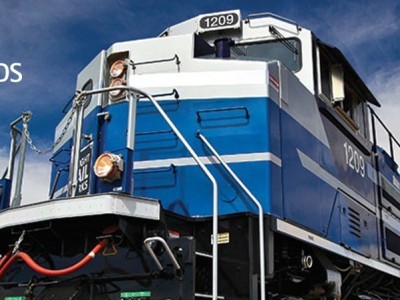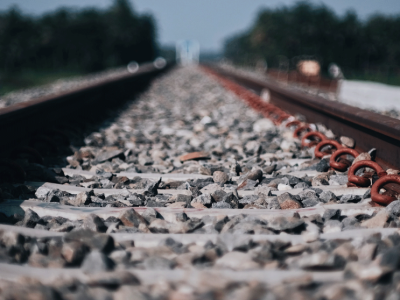Asia’s most valuable zinc maker looks to gain from India’s rail overhaul
A push to modernize Asia’s oldest railway network could help spur demand for zinc, according to India’s sole producer.
Prime Minister Narendra Modi has outlined a plan to spend about $1.5 trillion to upgrade and build infrastructure over the next five years to shore up economic growth, boosting the outlook for zinc, used to galvanize steel and prevent corrosion. There are early signs of a possible pick up—Indian Railways is setting targets to lay zinc-coated rails and has fitted stations with galvanized roofs to replace asbestos sheets, according to Hindustan Zinc Ltd. Chief Executive Officer Sunil Duggal.
Asia’s top zinc producer by market capitalization has been campaigning for Indian Railways to increase their use of galvanized steel in its rail lines, although the material is also used in industries from construction to cars. The country produces about 100 million tons of steel every year, but less than 10% of it is coated with zinc, resulting in corrosion-related costs amounting to about 4% to 5% of India’s gross domestic product every year, Duggal said.
“Galvanization is like an investment that not only enhances the life of infrastructure and provides safety but also adds to the GDP of country by reducing scrap and frequent expenditure on replacements,” he said in an interview. A 2016 study by the National Association of Corrosion Engineers estimates corrosion cost India $70 billion, which could have been avoided had structures been coated with zinc.
India’s railway ministry expects to buy about 1.5 million tons of tracks in the year ending March. Indian Railways, the monopoly operator, has about 18 million tons of steel assets including rail lines and material for sheds and stations, which Duggal says should be protected from corrosion “to ensure its longevity and sustainability.”
Replacement Expenditure
Demand for primary zinc in the South Asian nation depends largely on the growth of the steel market as it accounts for 70% of the total consumption. India’s per capita consumption of zinc is only 30% of the world average of 2 kilogram per person, the Australian government said in a quarterly report.
“Growth in zinc consumption is fundamentally to be supported by the issues of rust and corrosion in steel,” said Urvisha Jagasheth, an analyst at Care Ratings Ltd. “In the long run, galvanizing would definitely be beneficial, outweighing the costs, and cost efficiencies would be realized because the corrosion and rust would be minimized.”
Hindustan Zinc’s output was 696,000 tons in the year ended March 31. India’s consumption may rise more than 3% to about 795,000 tons this financial year, according to Care, accounting for about 5% of global demand.
Similar Stories

AAR Reports Rail Traffic for the week ending December 28, 2024
View Article
Realterm expands Minnesota presence with acquisition of an industrial outdoor storage fleet maintenance facility in Minneapolis
View Article
Avison Young facilitates multi-parcel land sale near Northeast Georgia Inland Port for two new industrial buildings
View Article
BTS Data reveals long-term trend in North American freight trucking
View Article
NCFO members vote to ratify national agreement with NCCC
View ArticleFTR’s Shippers Conditions Index softens in October, falling to 1.3
FTR’s Shippers Conditions Index declined in October to 1.3 from a 4.6 reading in September. Market conditions for shippers were not as favorable due to firmer fuel costs and tighter…
View ArticleGet the most up-to-date trending news!
SubscribeIndustry updates and weekly newsletter direct to your inbox!




